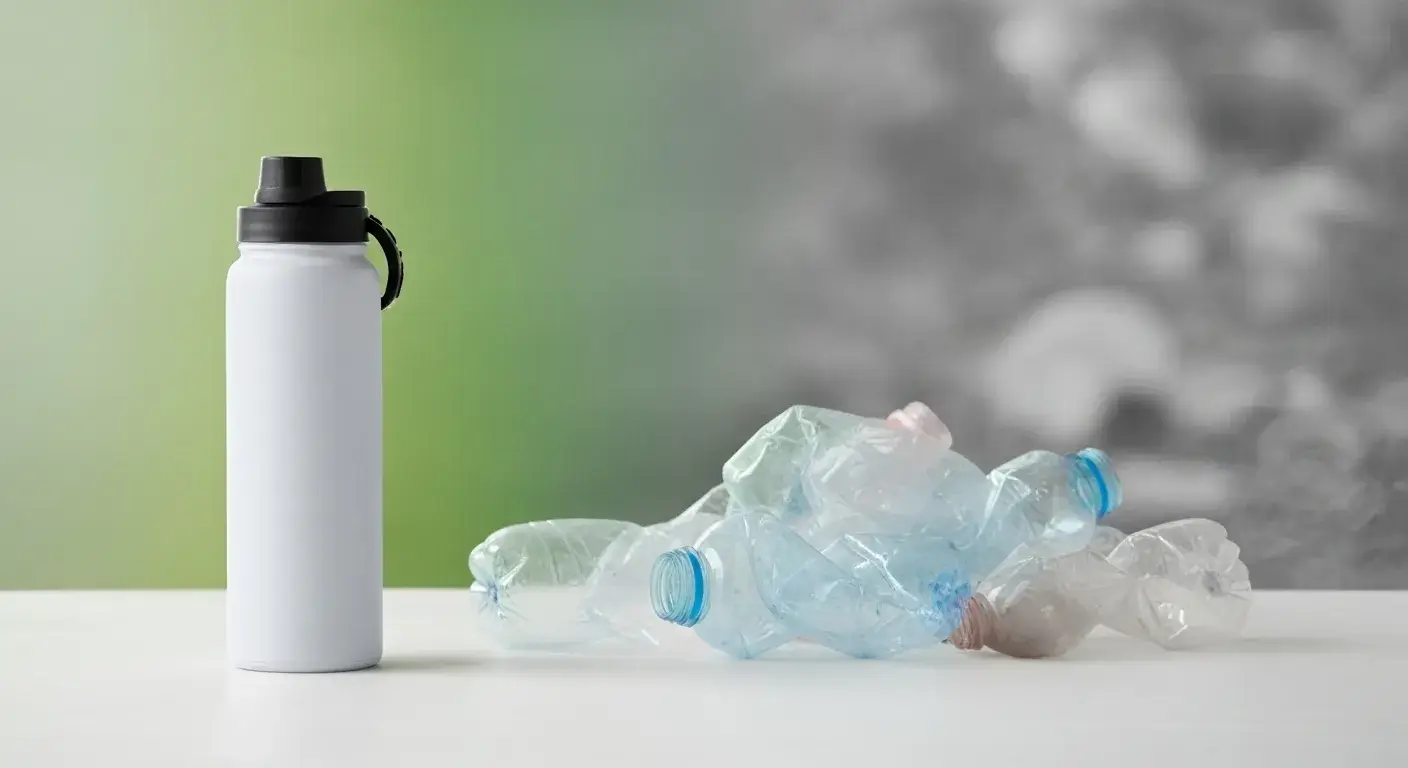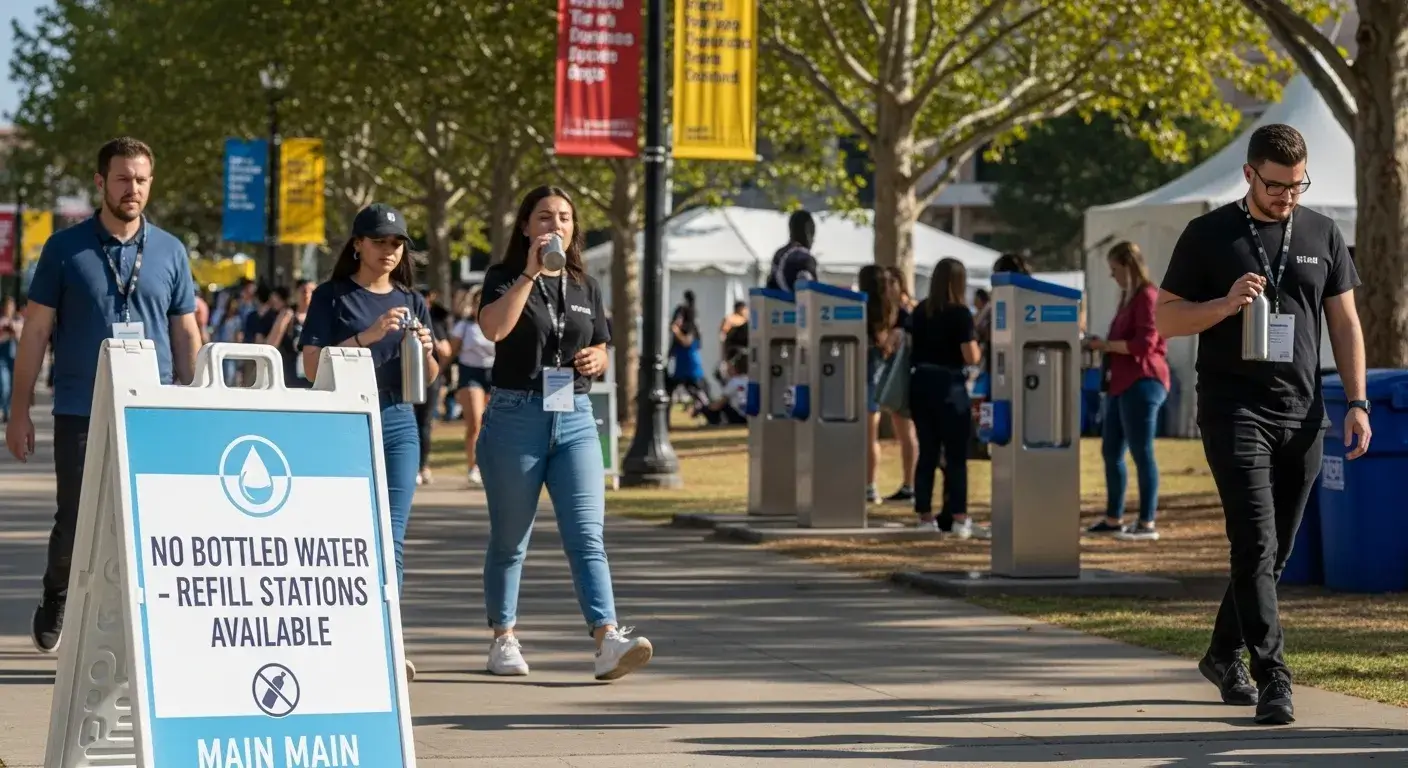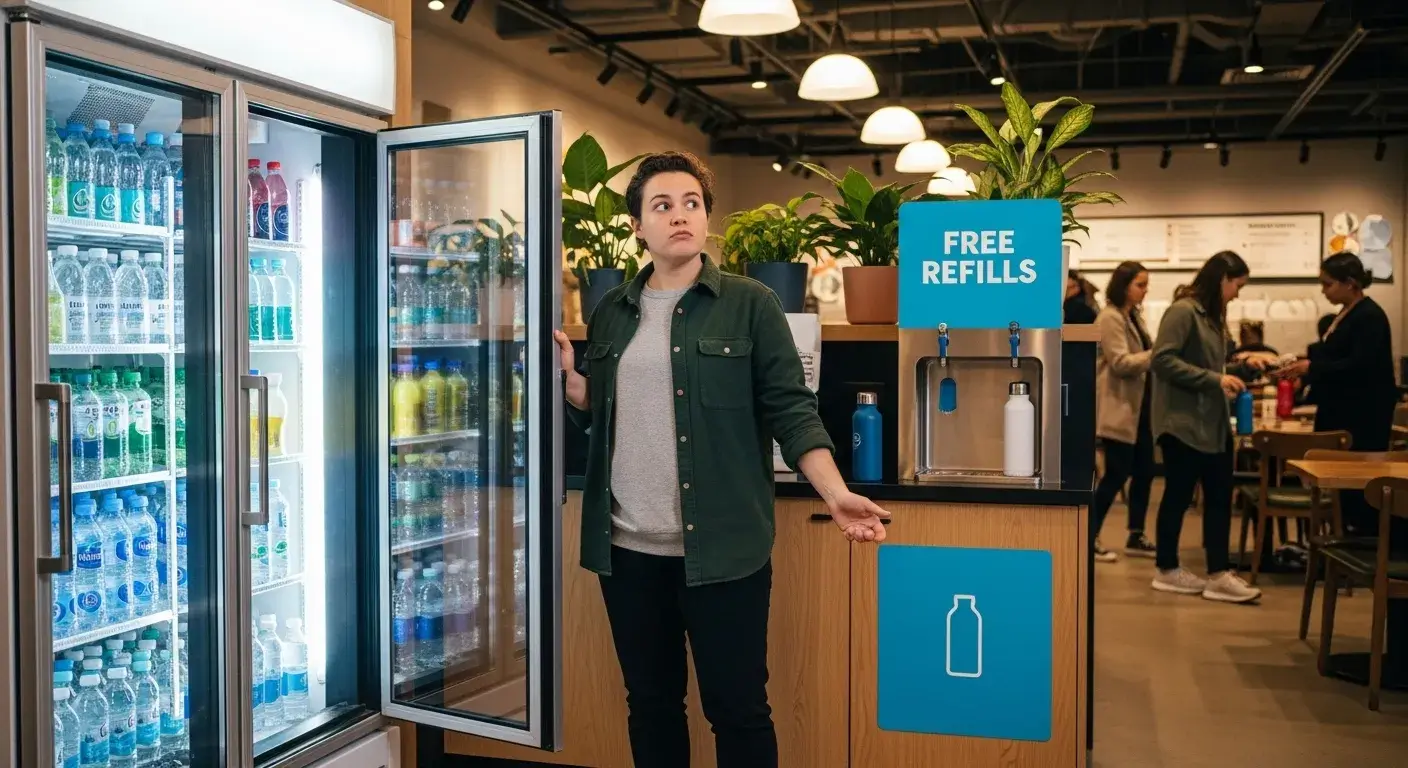
Bottled water is convenient, but it comes with heavy environmental costs. Here’s how we can reduce its use and protect the planet.
U.S. consumers used over 16 billion gallons of bottled water in 2024, but shifting to reusables and tap water can cut pollution and costs.
With the right strategies, we can all contribute to lowering our plastic footprint.
Why is reducing bottled water consumption important for the environment?
Single-use water bottles pile up fast.
Producing and disposing of plastic bottles adds to ocean pollution, uses fossil fuels, and emits greenhouse gases.

Key Environmental Concerns
- Plastic waste: Bottles take hundreds of years to decompose.
- Carbon emissions: Production and transport require oil and energy.
- Water use: It takes 3 liters of water to make 1 liter of bottled water.
Every bottle avoided makes a real difference.
What are the main factors driving the growth in bottled water use?
It’s not just thirst—it’s marketing and convenience.
Health concerns, lifestyle needs, and mistrust of tap water fuel rising bottled water sales worldwide.

Drivers of Demand
- Healthier alternative to soda.
- Portable and accessible everywhere.
- Fear of contaminated tap water.
- Brand image and marketing influence.
Changing these habits requires more than just logic—it takes trust and access.
How can individuals reduce their reliance on bottled water daily?
It starts with personal choices.
Carrying a reusable bottle, trusting safe tap water, and using public refill stations are small steps that add up.

Simple Ways to Cut Bottled Water Use
- Use a reusable bottle every day.
- Install a home filter if tap taste is an issue.
- Choose tap water at restaurants and cafes.
- Support businesses that offer refill options.
Small changes in habit make a large impact over time.
What role do reusable water bottles play in cutting bottled water use?
They’re not just trendy—they’re essential.
Reusable bottles eliminate the need for single-use plastics, saving resources and reducing landfill waste.

Benefits of Reusables
- Lower long-term cost.
- Wide material choices (steel, glass, BPA-free plastic).
- Encourages mindful hydration habits.
- Reduces reliance on store-bought bottled water.
Investing in a reusable bottle is an easy, practical eco-upgrade.
How can businesses and public places encourage less bottled water consumption?
They influence millions of choices every day.
Offering refill stations and reusable alternatives can drastically lower bottled water demand in workplaces and public areas.

Workplace and Public Space Initiatives
- Install filtered water fountains.
- Provide company-branded reusable bottles.
- Reduce or ban bottled water sales in cafeterias.
- Offer education and incentives to employees or visitors.
Culture shift begins in the places people gather.
What policies or regulations have proven effective in reducing bottled water use?
Rules make a difference.
Bottle bans, taxes, and deposit systems have shown strong results in lowering usage and boosting awareness.

Policy Solutions
| Policy Type | Impact |
|---|---|
| Bottle bans (events, schools) | Reduces access to single-use bottles |
| Bottle taxes | Discourages casual purchases |
| Refill station mandates | Increases public access to safe alternatives |
| Deposit return schemes | Boosts recycling rates |
Regulations work best when paired with public education.
How does access to safe tap water influence bottled water consumption?
Safety concerns often drive plastic use.
Where tap water is safe and trusted, people use less bottled water. Poor water infrastructure increases dependency on bottles.

Tap Water and Trust
- High trust in municipal water = low bottled water sales.
- Low trust = higher reliance on bottled options.
- Investing in infrastructure and public reports builds confidence.
Clear, safe water is one of the best tools to reduce bottled water use.
What are the environmental and economic benefits of reducing bottled water use?
You help the earth—and your wallet.
Less bottled water means less plastic, fewer emissions, and more money saved.

Key Benefits
- Environmental: Fewer bottles in landfills and oceans.
- Economic: Tap water costs pennies vs. bottled dollars.
- Social: Less strain on public waste systems.
Cutting bottled water doesn’t require sacrifice—just smarter habits.
How can sustainable packaging innovations help reduce bottled water waste?
Better bottles make a better planet.
Eco-friendly materials like plant-based plastics and boxed cartons reduce the environmental toll of packaging.

Packaging Innovations
- Biodegradable and compostable plastics.
- Carton-based water packaging.
- Bottles made from 100% recycled PET.
These don’t eliminate waste, but they lower the long-term damage.
What challenges exist in changing consumer behavior around bottled water?
Habits are hard to break.
Barriers include misinformation, habit, convenience, and lack of infrastructure.

Common Challenges
- Limited refill access.
- Misconceptions about tap safety.
- Strong brand marketing for bottled water.
- Convenience outweighs conscience for many consumers.
Tackling these requires a mix of education, access, and incentives.
Conclusion
Reducing bottled water use isn’t just a green goal—it’s a global need that begins with personal and policy-level action.
FAQs
Why is bottled water bad for the environment?
It contributes to plastic waste, greenhouse gas emissions, and unnecessary resource use.
What’s better—filtered tap water or bottled water?
Filtered tap water is more affordable, sustainable, and often just as safe.
How much bottled water is used globally each year?
Over 60 billion liters annually in the U.S. alone, and over 350 billion dollars’ worth worldwide.
Can refill stations really make a difference?
Yes, especially in schools, offices, and cities where people are encouraged to bring reusable bottles.
Is banning bottled water effective?
Yes—especially in controlled environments like campuses and events, bans reduce plastic waste.

